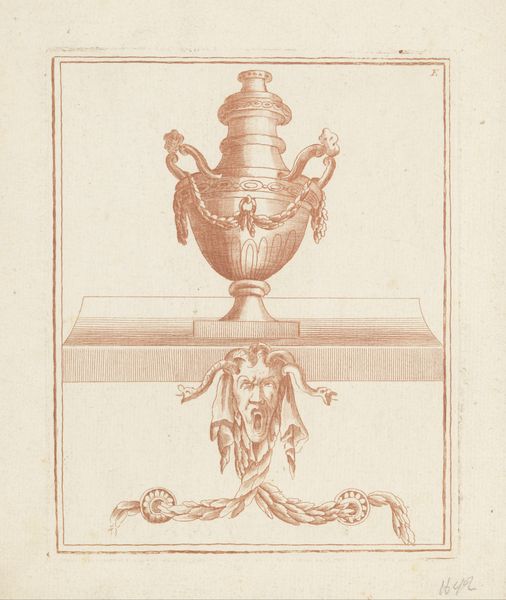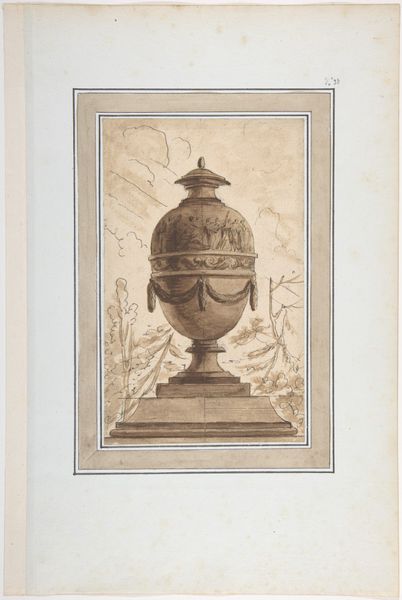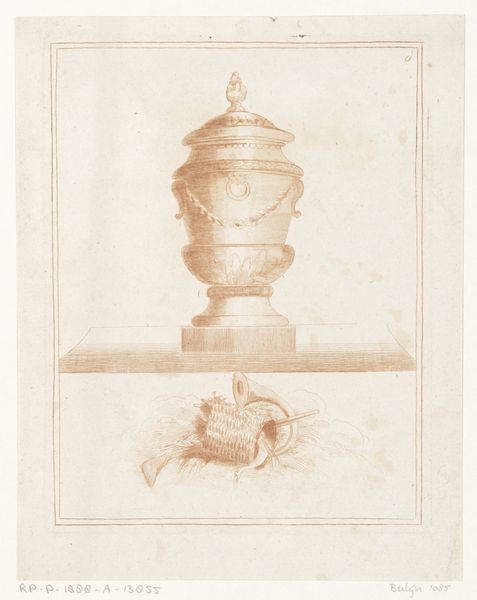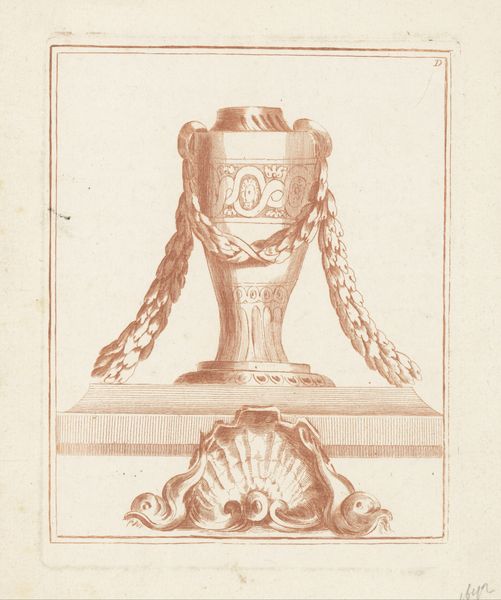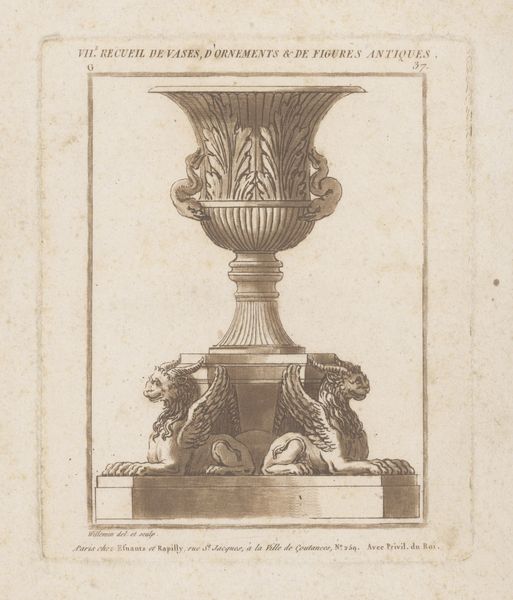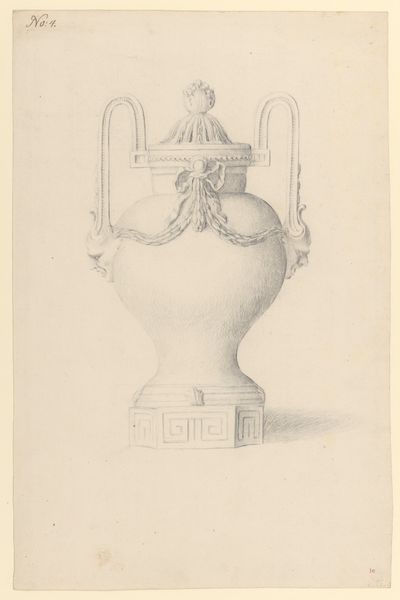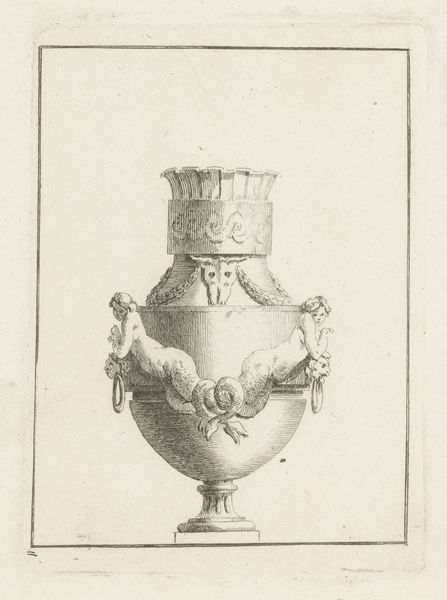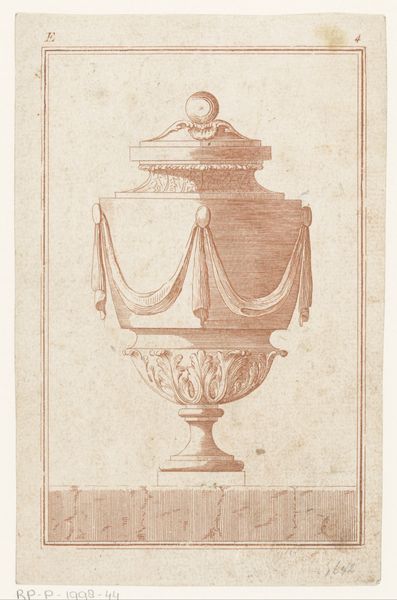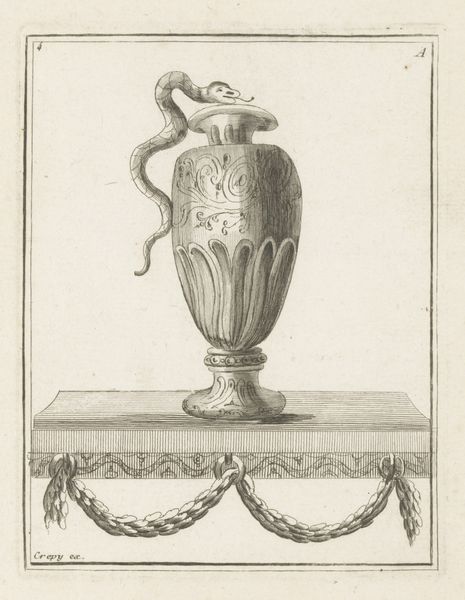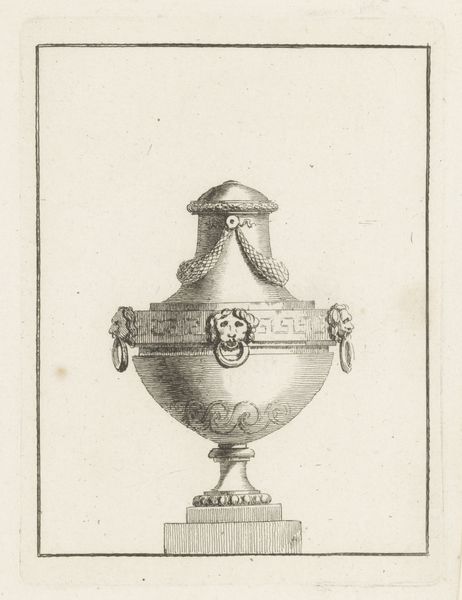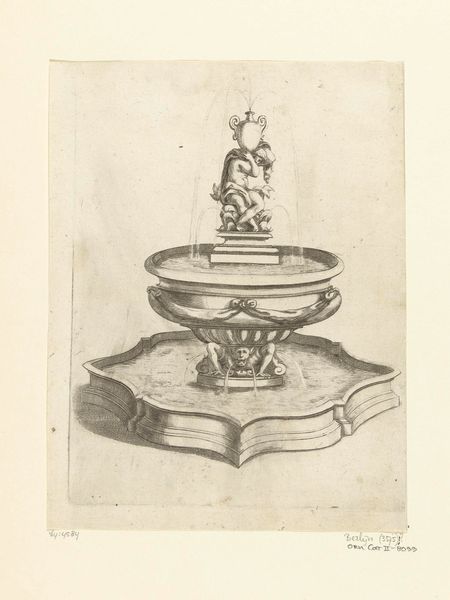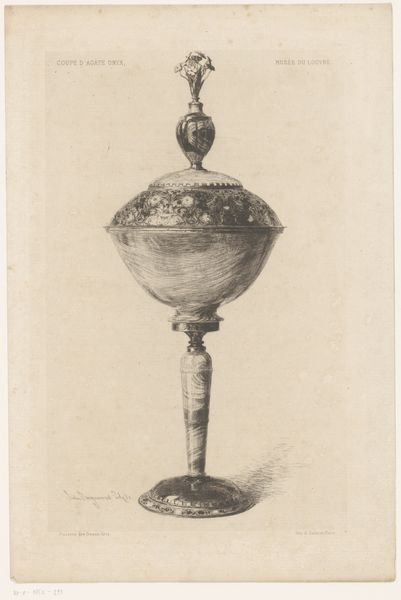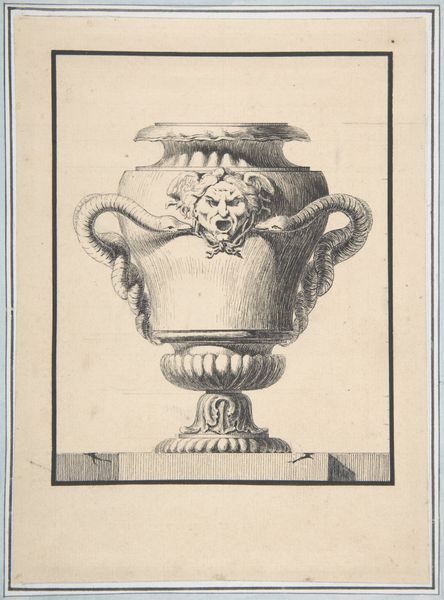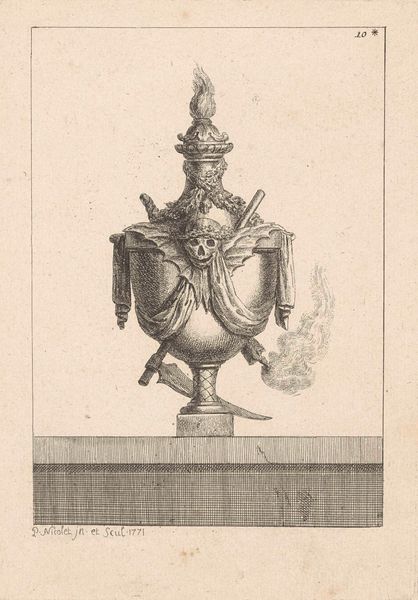
print, engraving
#
pencil drawn
# print
#
pencil sketch
#
caricature
#
academic-art
#
engraving
Dimensions: height 166 mm, width 132 mm
Copyright: Rijks Museum: Open Domain
Editor: So, here we have Jacques Juillet's "Vase and Cloths" from 1768, an engraving held at the Rijksmuseum. The monochromatic sepia tones create a sense of antiquity, and there's this clear tension between the rigid urn and the flowing drapery. How do you interpret the artist's choices regarding form and composition? Curator: Indeed. If we analyze the image, we see a clear emphasis on geometric forms—the vase itself, cylindrical and spherical, contrasted with the angular blocks in the lower register. Notice how the draping cloth, though seemingly organic, is carefully positioned to create a dynamic interplay of light and shadow. What effect does this controlled contrast produce for you? Editor: I think it adds a kind of restrained drama, like everything is carefully considered and placed. It's balanced, but also feels a little... lifeless, perhaps because of the limited color palette? Curator: Precisely. The choice of sepia tones isn't merely representational, but affects our perception of form. It flattens certain areas while simultaneously accentuating the subtle gradations of light across the vase. Do you find this evokes a specific period, maybe neoclassicism's interest in idealized form? Editor: I do. I'm seeing that classicism reflected in the urn itself. And the drape almost recalls classical sculpture, now that you point it out. Thank you for helping me to see more of the artist’s intentions, in terms of geometric form and manipulation of light! Curator: My pleasure. Ultimately, the piece reminds us that even within seemingly simple compositions, the arrangement of shapes and light can produce sophisticated artistic outcomes. It all reinforces the formal aspects of neoclassicism!
Comments
No comments
Be the first to comment and join the conversation on the ultimate creative platform.
